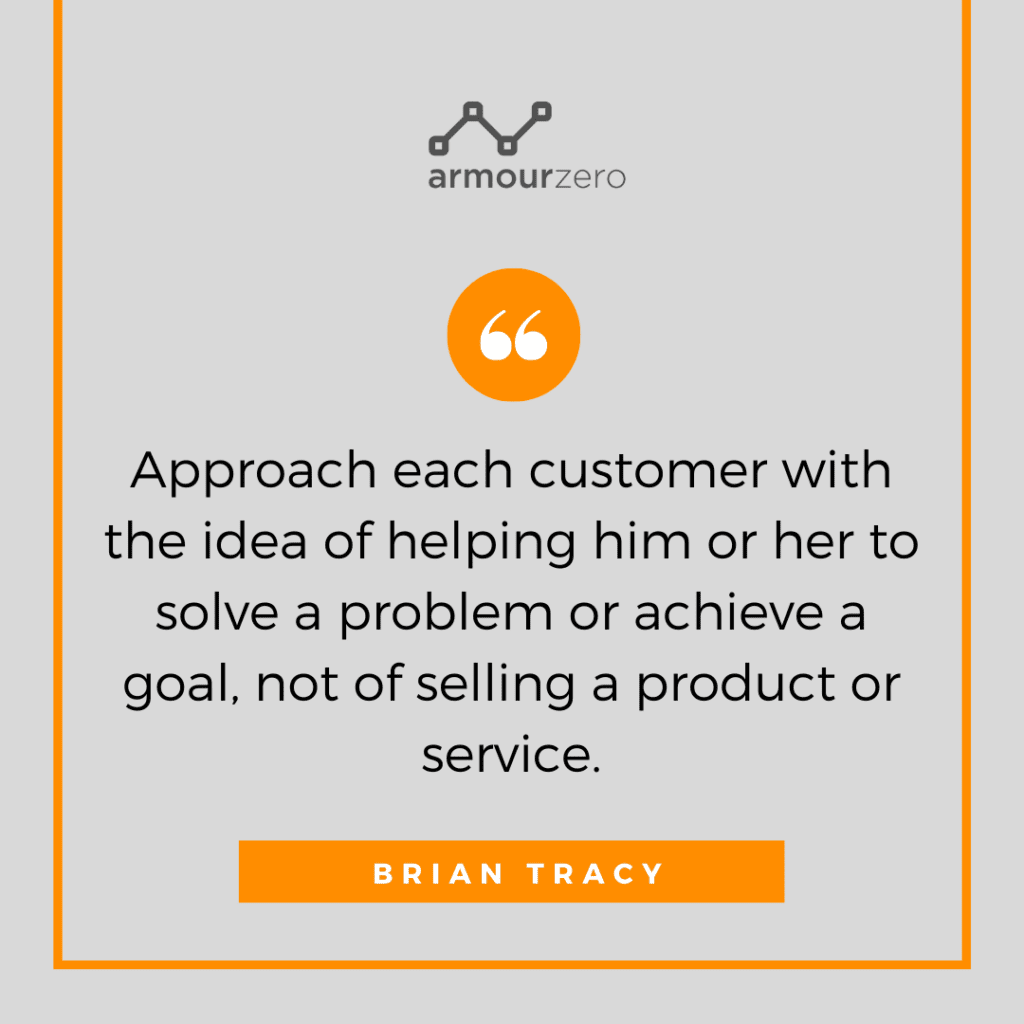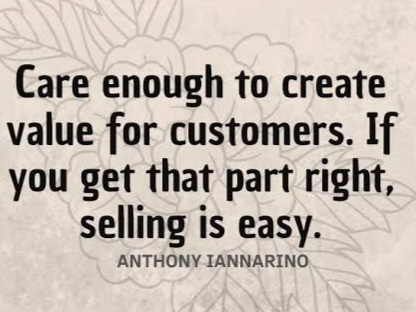The Importance of a Compelling
Sales Pitch

Could one’s sales approach be turning current and future customers away?
A good question to ponder and debate, from a sales executive’s perspective and also, more importantly, in my humble opinion, from a potential customer’s standpoint.
Giving a sales pitch is much more involved than just babbling off a memorised list of facts and figures. One has to address the customers’ specific needs, requirements, and budget (never forget that).
A sales pitch is a condensed sales presentation where a salesperson explains the nature and benefits of their business, ideally in less than one or two minutes. Sales pitches are often referred to as ‘elevator pitches’ because they should be able to be delivered within the time constraints of a single elevator ride.
I wonder how many sales executives treat their sales pitch presentation as a work of art, part performance and part conversation? An effective pitch meeting forges the salesperson’s relationship with the potential clients in convincing them to invest, but a poor experience can cost losing the sale and damage one’s reputation.
The following are some points that differentiate excellent pitches from poor ones, for a salesperson:
Not understanding one’s product and/or prospect into a meeting, virtual, remote or face-to-face, unprepared is a mistake, a cardinal sales sin:
- LinkedIn research found that “79% of decision-makers are least likely to engage with sales professionals who lack knowledge about their company.”
- People can sense when the salespeople do not grasp the subject matter well. Even if salespeople know their products and/or services at the back of their hands, inside and out, the prospective clients will have questions that can outwit the salesperson.
- According to Salesforce, 73% of customers expect companies to understand their unique needs and expectations.
- Tailoring your presentation to your buyer’s area of interest and focusing on their top priorities is essential.
- Avoid impersonal interactions by emphasising the prospect’s pain point, then establish your credibility.
Using jargon or complex terminologies:
- Unfamiliar words and acronyms can confuse your audience or come across as condescending but you also do not want to be vague.
- Business-to-business (B2B) buyers comparing several vendors may only spend 5% to 6% of their journey with one sales rep. Use your time wisely with descriptive, concrete but layman’s language.
- Concrete language refers to tangible or perceivable characteristics in the real world. Such language is often called “specific.” Concrete language can help the customers more precisely to understand your sales pitch. Abstract language refers to intangible ideas, rather than real-world objects.
- Using specific terms when talking with your customers like the dark blue paint instead of just the paint, for example, shows that the salesperson is listening to what the clients are saying.
- Whether it involves the incoherent ramblings of a customer service representative or the babbling claims of a salesperson, vagueness frustrates customers and discourages purchases.
- When employees speak in concrete terms as simple as referring to a beige sweater instead of that clothing, customers will understand, are more satisfied, more willing to buy something and apt to buy more of it, a new study found. The effect owes in part to a consumer’s perception that the salesperson is listening and responding with care rather than just going through the motions of selling.
- Sales Executives should be encouraged to use words the customer is using to say the things the customer cares about. Using concrete language makes it seem like salespeople are really listening and paying attention to the customer’s needs.
- Using concrete language can be one easy way to improve that customer service, especially on the phone, where a salesperson cannot use eye contact or other body language to indicate they are paying attention.
- Being descriptive or detailed rather than vague wordings can help even with 1-on-1 interactions, as with a personal trainer or a plumber on-site.
- Also, the value of concreteness increases when a customer’s needs are complex or when a salesperson might be busy or distracted as in a restaurant, retail store or auto repair shop.
- Work with marketing and customer service teams to identify the terms or phrases the audience uses or preferred.
- Also, deliver your sales pitch to a coworker, friend, or family member. Can they understand what you’re talking about without an explainer?
- Unlike listing features and benefits, purposeful narration evokes emotion and illustrates outcomes.
Sharing too much information too quickly
- Time constraints can lead to salespersons cramming as many details as possible into their presentation, both verbally and visually.
- However, it was reported that buyers remember, on average, only 10% of your presentation after 48 hours.
- Sharpening your 10% message and using repetition increases memorability.
- A slower pace also lets your prospect digest information and ask questions.
- The Data-Insight-Question (DIQ) method is a compelling way to make the most of your time, starting with a statistic or data point to establish credibility.
- Then, personalise your data insights to your prospect’s situation. Then, ask a relevant, provocative, buyer-focused, and action-oriented question.
- Lastly, ensure your slide deck focuses on your 10% message and isn’t stuffed with decorative images and data points. Use animation to share details piece-by-piece and avoid overwhelming your audience.
Feature-dumping instead of storytelling
- Rattling off a list of features or benefits doesn’t deliver results, especially since this method often fails to address buyer-specific concerns. Instead, use a problem-solution approach that focuses on your value proposition.
- Unlike listing features and benefits, purposeful narration evokes emotion and illustrates outcomes. It provides social proof, addresses a specific issue, and demonstrates verifiable improvements.
Ignoring nonverbal cues
- Salespersons often record and listen to their pitches to improve their public speaking skills. Yet they fail to understand how their body language could undermine their goals. Non-verbal cues can make you appear standoffish or rushed. Likewise, your prospect’s body language reflects their engagement level.
- It Has been reported that 42% of buyers want salespersons to have active listening traits but all too often, salespeople stick to the script even when nonverbal cues suggest a change of pace or content is needed.
- Instead, practice active listening. It involves paying attention to body language and conveying openness and friendliness with your mannerisms. Active listening also means paying attention to what your customer says without interruption and tailoring your response to them, not your script.
In conclusion:

- Sales pitching is not as easy as it sounds. Salespeople should think of themselves as Influencers, compelling storytellers and problem solvers and/or solutions providers.
- Be the one who can sell ice to the eskimo.
- “Prospecting – find the man with the problem.” ~ Benjamin Friedman.
Finding someone with a problem and showing them how you can solve it is the key to a successful sales strategy.
Your main goal as a salesperson is to help your customers. If you demonstrate how your product solves their problem, they’ll buy.
- “Treat objections as requests for further information.” ~ Brian Tracy.
When a customer objects, that simply means you haven’t provided enough information. For example, “I don’t have the money” might mean, “you haven’t demonstrated this product has enough value to warrant a purchase from me.”
- “Customers don’t care at all whether you close the deal or not. They care about improving their business.” ~ Aaron Ross.
Understand your customer’s deepest problems and pain points. Aim to help them solve those pain points, not to simply close the deal.
- “Every sale has five basic obstacles: no need, no money, no hurry, no desire, no trust.”
~ Zig Ziglar.
These are the five key objections most customers present to sales reps. Understand and address these objections to dramatically boost sales success.

Catch When Expert Meets Expert by Eugene Chung articles every bi-weekly Tuesday. Don’t forget to subscribe to stay connected. You are also encouraged to ask questions and seek advice from him.
Share this post
Related Posts

Cybersecurity: Achieving the ‘Hole-in-One’ of Digital Defence
- 07 Nov 2023
- By:Bernadetta Septarini
- Category: When Experts Meet Experts (WEME)
Discover the connection between cybersecurity and sports with Tony Smith, Regional VP at WithSecure. Let’s achieve the ‘Hole-in-One’ of Digital Defense.

Beware of Scare Software aka Scareware
- 21 Nov 2022
- By:Eugene Chung
- Category: When Experts Meet Experts (WEME)
What is Scare Software or Scareware? Learn more about this Social Engineering technique that aimed to scare the victim with ArmourZero mentor Eugene Chung.

Job Hunting Tips for IT Graduates
- 14 Nov 2022
- By:Ts. Saiful Bakhtiar Osman
- Category: When Experts Meet Experts (WEME)
The job market is tough and competitive. Learn some tips on how to do job hunting for IT graduates from ArmourZero’s mentor and expert Ts. Saiful Bakhtiar.

Tips to Successfully Sell a Credible Cybersecurity Solution
- 07 Nov 2022
- By:Eugene Chung
- Category: When Experts Meet Experts (WEME)
How do Cybersecurity sales convince prospects to trust their services and/or products? Learn more about it from ArmourZero’s mentor and expert Eugene Chung.

